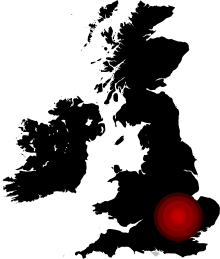Colney Coal Posts
Probably on many occasions you will have driven past these historical features in your car and either never have noticed them, or not thought anything of them. But back in the 19th century, if you had been travelling through Hertfordshire, they most definitely would have been a part of each and every journey you made.
The features I am referring to are called coal posts – coal tax posts erected following the Coal Duties Act of 1851, with at least 40 still remaining within south Hertfordshire – some at road junctions and some buried away in woodland and hedgerows. There are four remaining in Colney Heath, suggesting that this small Hertfordshire village less than five miles from St. Albans, was once a busy route for trade travelling to London.
People will have queued with carts loaded with coal, food, wine and clothing, having to negotiate with the taxman on the amount they were being asked to pay depending on their tonnage, in order to allow their goods to pass through the collection boundaries. The taxes they paid at these coal posts were used to fund the building of many of the bridges which cross the River Thames.
Most of the coal posts are made from iron, and pillars which are about four foot high, but some are small plaques set in the wall – the favoured type for boundaries next to canals or railways.
The pillars are usually brightly painted, with ornate designs which contain historic information, such as the arms of the City of London, details of the Act under which they were erected, a shield with the cross of St. George and the sword of St. Paul, and details of the casting company. Some are large obelisks made of cast iron, an example of which can be seen on the east coast main line north of Potters Bar, and south of Brookmans Park (in the civil parish of North Mymms).
Why not see how many you can spot on your travels to and from St. Albans Car and Van Hire!
Posted on May 11th 2016


